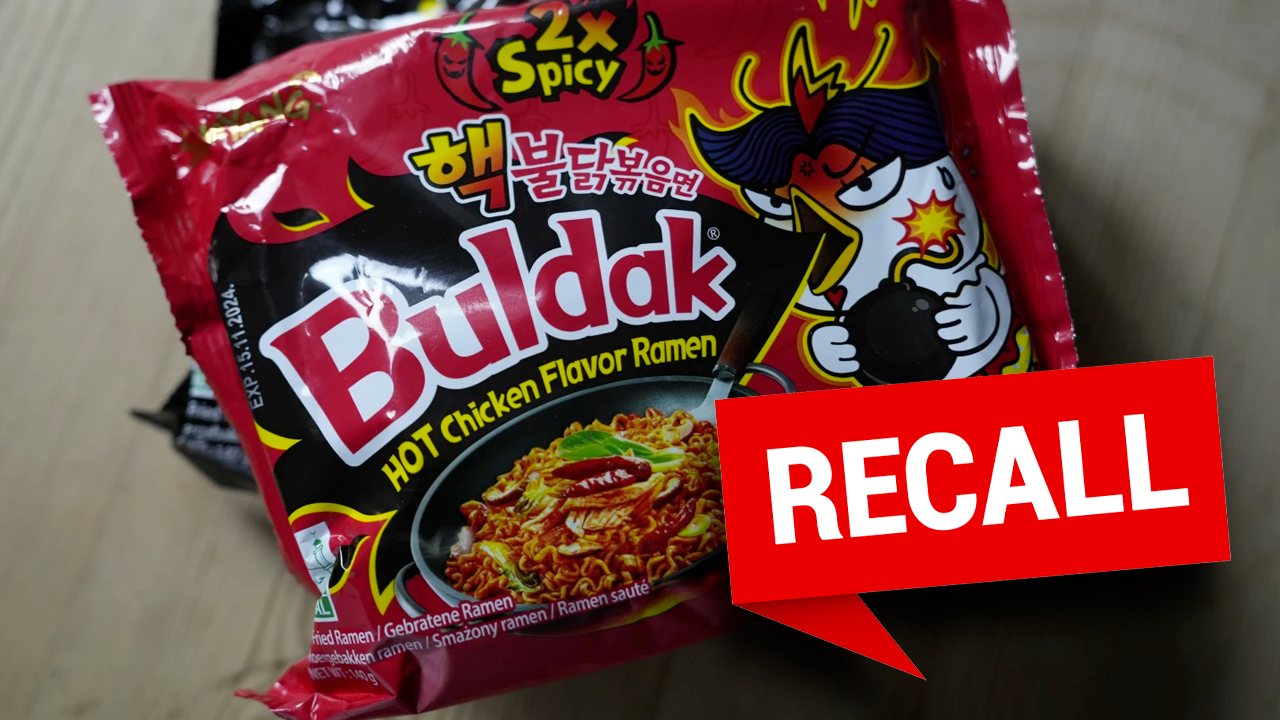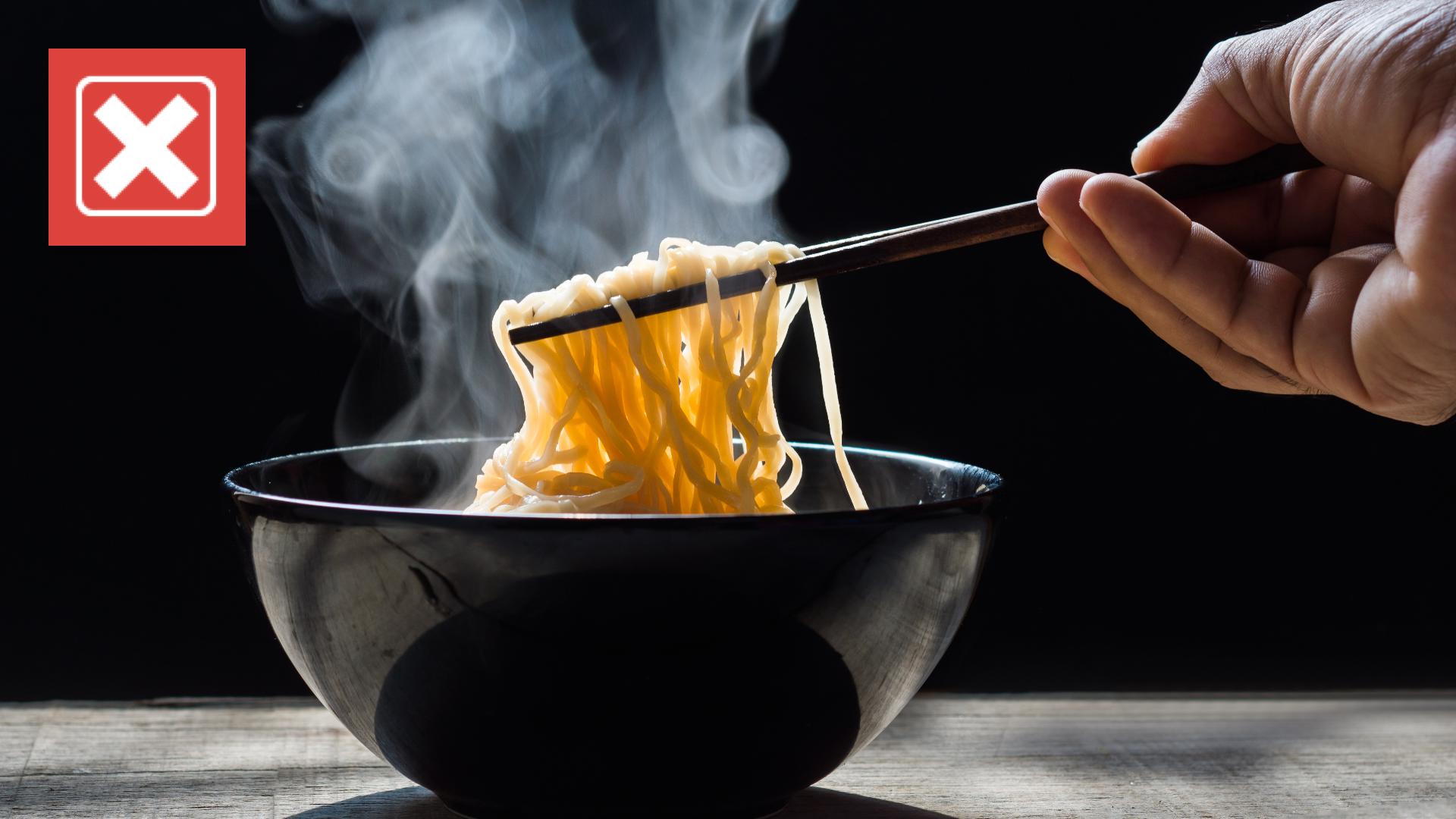Ramen Recall: Understanding the Risks of Bacterial Contamination
Ramen, a popular instant noodle dish, has recently been in the news due to several recalls related to bacterial contamination. These recalls highlight the importance of understanding the potential risks associated with consuming contaminated food products.
Bacterial contamination can occur at various stages of ramen production, from the sourcing of ingredients to the packaging and storage of the final product. Common types of bacteria that can contaminate ramen include Salmonella, E. coli, and Listeria. These bacteria can cause a range of symptoms, from mild gastrointestinal distress to severe illness and even death.
- Austin Theory Where Hes From Wwe Beginnings
- Cedric The Entertainers Wife Meet Lorna Exclusive Details
To ensure the safety of ramen and other food products, it is crucial to implement strict hygiene practices throughout the production process. Regular monitoring and testing of products can help detect and prevent the spread of contamination. Consumers also play a role in preventing foodborne illness by following proper food handling and storage guidelines.
Ramen Recall Bacteria
Types of Bacteria
Introduction: Different types of bacteria can contaminate ramen, each posing unique health risks.Facets:- Salmonella: Causes severe gastrointestinal symptoms, including diarrhea, vomiting, and fever.
- E. coli: Can cause a range of symptoms, from mild discomfort to life-threatening infections.
- Listeria: Particularly dangerous for pregnant women, newborns, and individuals with weakened immune systems.
Sources of Contamination
Introduction: Contamination can occur at various stages of ramen production and distribution.Facets:- Ingredients: Contaminated ingredients, such as eggs or vegetables, can introduce bacteria into the ramen.
- Processing: Unsanitary conditions during processing can allow bacteria to multiply.
- Packaging: Improper packaging or storage can create an environment conducive to bacterial growth.
Prevention and Control
Introduction: Implementing rigorous measures is essential to prevent and control bacterial contamination in ramen.Facets:- Hygiene: Maintaining high levels of hygiene throughout the production process is crucial.
- Monitoring: Regular testing and monitoring of products can detect contamination early on.
- Consumer Education: Informing consumers about proper food handling and storage practices can help prevent illness.
Ramen Recall Bacteria
Ramen, a popular instant noodle dish, has been subject to several recalls due to bacterial contamination. Understanding the key aspects of ramen recall bacteria is crucial for ensuring food safety.
- Contamination Sources: Ingredients, processing, packaging
- Types of Bacteria: Salmonella, E. coli, Listeria
- Health Risks: Gastrointestinal distress, severe illness, death
- Prevention Measures: Hygiene, monitoring, consumer education
- Regulatory Oversight: Government agencies ensure compliance, enforce standards
These aspects highlight the importance of rigorous food safety practices throughout the ramen production and distribution chain. Stringent hygiene measures, regular testing, and consumer awareness are essential to minimize the risk of bacterial contamination. Regulatory oversight plays a vital role in ensuring compliance and protecting public health.
Contamination Sources
Contamination of ramen with bacteria can occur at various stages of production and distribution, including the ingredients, processing, and packaging. Understanding these sources is crucial for implementing effective prevention and control measures.
Ingredients: Contaminated ingredients, such as eggs or vegetables, can introduce bacteria into the ramen. For example, in 2022, a recall of ramen products was issued due to the detection of Salmonella in the seasoning powder, which was traced back to contaminated eggs used as an ingredient.
Processing: Unsanitary conditions during processing can allow bacteria to multiply. Inadequate cooking temperatures, cross-contamination, and poor hygiene practices can all contribute to bacterial growth. In 2021, a ramen recall was initiated due to the presence of E. coli, which was linked to insufficient cooking during the manufacturing process.
Packaging: Improper packaging or storage can create an environment conducive to bacterial growth. Damage to packaging, allowing moisture or contaminants to enter, can increase the risk of contamination. In 2020, a recall of ramen products occurred due to packaging defects that allowed air and moisture to enter, leading to mold growth.
Identifying and controlling contamination sources is essential for ensuring the safety of ramen and other food products. Regular monitoring, supplier audits, and adherence to strict hygiene practices throughout the production and distribution chain are critical. Addressing these sources helps prevent bacterial contamination and minimize the risk of foodborne illness.
Types of Bacteria
Bacterial contamination is a major concern in the food industry, and ramen has been subject to several recalls due to contamination with bacteria such as Salmonella, E. coli, and Listeria. Understanding the characteristics and health risks associated with these bacteria is crucial for implementing effective prevention and control measures.
- Salmonella
Salmonella is a type of bacteria that can cause salmonellosis, a foodborne illness characterized by diarrhea, vomiting, fever, and abdominal cramps. Salmonella contamination in ramen can occur through the use of contaminated ingredients, such as eggs or poultry, or through cross-contamination during processing. In 2022, a major ramen recall was issued due to Salmonella contamination, affecting several brands and flavors.
- E. coli
E. coli is a type of bacteria that can cause a range of illnesses, from mild gastrointestinal distress to severe and life-threatening infections. E. coli contamination in ramen can occur through the use of contaminated water or, or through poor hygiene practices during processing. In 2021, a ramen recall was initiated due to E. coli contamination, which was linked to inadequate cooking temperatures during manufacturing.
- Listeria
Listeria is a type of bacteria that can cause listeriosis, a serious infection that can be particularly dangerous for pregnant women, newborns, and individuals with weakened immune systems. Listeria contamination in ramen can occur through the use of contaminated ingredients, such as vegetables or dairy products, or through cross-contamination during processing. In 2020, a ramen recall was issued due to Listeria contamination, which was traced back to a supplier of frozen vegetables used in the ramen.
These examples highlight the importance of stringent hygiene practices, regular monitoring, and supplier audits throughout the ramen production and distribution chain. Understanding the different types of bacteria that can cause ramen recalls and their associated health risks is essential for ensuring the safety of this popular food product.
Health Risks
Bacterial contamination of ramen poses significant health risks, ranging from gastrointestinal distress to severe illness and even death. Understanding these risks is crucial for consumers and food safety officials alike.
Gastrointestinal distress, characterized by symptoms such as nausea, vomiting, and diarrhea, is a common consequence of consuming ramen contaminated with bacteria like Salmonella, E. coli, or Listeria. While these symptoms can be unpleasant and disruptive, they typically resolve within a few days. However, for individuals with weakened immune systems, the elderly, and young children, gastrointestinal distress can lead to dehydration and other complications.
In severe cases, bacterial contamination of ramen can lead to more serious illnesses, including septicemia, meningitis, and kidney failure. These conditions require prompt medical attention and can be life-threatening. For example, in 2016, a ramen recall was issued due to E. coli contamination, which resulted in several cases of severe illness and one death.
Understanding the health risks associated with ramen recall bacteria is essential for consumers to make informed choices about the food they eat. It also highlights the importance of rigorous food safety practices throughout the production and distribution chain to prevent contamination and protect public health.
Prevention Measures
To effectively combat ramen recall bacteria and ensure the safety of ramen products, a multifaceted approach involving hygiene, monitoring, and consumer education is essential. Each of these elements plays a crucial role in preventing bacterial contamination and safeguarding public health.
Maintaining high standards of hygiene throughout the ramen production and distribution chain is paramount. This includes implementing Good Manufacturing Practices (GMPs) and Sanitation Standard Operating Procedures (SSOPs) to minimize the risk of contamination. Regular cleaning and disinfection of equipment, utensils, and work surfaces, as well as adherence to proper handwashing protocols, are critical to preventing the spread of bacteria.
Rigorous monitoring programs are also essential for detecting and preventing ramen recall bacteria. This involves regular testing of ingredients, products, and environmental surfaces for the presence of harmful bacteria. By identifying potential contamination sources early on, manufacturers can take swift action to prevent contaminated products from reaching consumers.
Consumer education plays a vital role in reducing the risk of ramen recall bacteria. Educating consumers about proper food handling and storage practices, such as cooking ramen to the recommended temperature and refrigerating leftovers promptly, can help prevent the growth and spread of bacteria. Clear and accessible information on food safety guidelines should be readily available to consumers through various channels, including product packaging, websites, and social media.
By implementing comprehensive prevention measures that encompass hygiene, monitoring, and consumer education, the ramen industry can significantly reduce the risk of bacterial contamination and ensure the safety of their products. This collaborative approach involving manufacturers, regulators, and consumers is essential for protecting public health and maintaining consumer confidence in ramen products.
Regulatory Oversight
Government agencies play a critical role in ensuring the safety of ramen products by implementing and enforcing food safety regulations. These agencies establish and monitor compliance with standards for hygiene, production, and distribution practices to minimize the risk of bacterial contamination.
For instance, the United States Food and Drug Administration (FDA) is responsible for regulating the production and distribution of ramen in the United States. The FDA conducts regular inspections of ramen manufacturing facilities to ensure adherence to Good Manufacturing Practices (GMPs) and other safety standards. The agency also tests ramen products for the presence of harmful bacteria, such as Salmonella, E. coli, and Listeria.
When ramen products are found to be contaminated, government agencies have the authority to issue recalls to remove them from the market and prevent their consumption. Recalls are an essential tool for protecting public health and preventing the spread of foodborne illnesses.
Effective regulatory oversight is crucial for ensuring the safety of ramen products and protecting consumers from the risks of bacterial contamination. Government agencies play a vital role in enforcing food safety standards, conducting inspections, testing products, and issuing recalls when necessary.
FAQs on Ramen Recall Bacteria
This section addresses frequently asked questions regarding ramen recall bacteria, providing concise and informative answers to common concerns and misconceptions.
Question 1: What are the common types of bacteria associated with ramen recalls?
Ramen recalls have been linked to various types of bacteria, including Salmonella, E. coli, and Listeria monocytogenes. These bacteria can cause a range of illnesses, from mild gastrointestinal distress to severe and life-threatening infections.
Question 2: How can consumers minimize the risk of consuming contaminated ramen products?
Consumers can reduce the risk of consuming contaminated ramen by following proper food handling practices. This includes cooking ramen to the recommended temperature, refrigerating leftovers promptly, and avoiding consuming products that have been recalled due to bacterial contamination.
Summary: Understanding the types of bacteria associated with ramen recalls and adopting safe food handling practices are crucial for consumers to minimize the risk of foodborne illness. Regulatory agencies play a vital role in ensuring the safety of ramen products through inspections, testing, and recalls, but consumer vigilance and adherence to food safety guidelines are equally important.
Ramen Recall Bacteria
Ramen recall bacteria have emerged as a serious concern, highlighting the importance of food safety and regulatory oversight. Contamination with bacteria like Salmonella, E. coli, and Listeria monocytogenes poses significant health risks, ranging from gastrointestinal distress to severe illness and even death. Consumers must remain vigilant and adhere to proper food handling practices, including cooking ramen to the recommended temperature and refrigerating leftovers promptly.
Preventing ramen recall bacteria requires a collaborative effort involving manufacturers, regulators, and consumers. Enhanced hygiene measures, rigorous monitoring programs, and consumer education campaigns are essential to minimize contamination risks. Government agencies play a crucial role in ensuring compliance with food safety standards, conducting inspections, and issuing recalls when necessary. By working together, we can create a safer food system and protect public health from the dangers of ramen recall bacteria.


